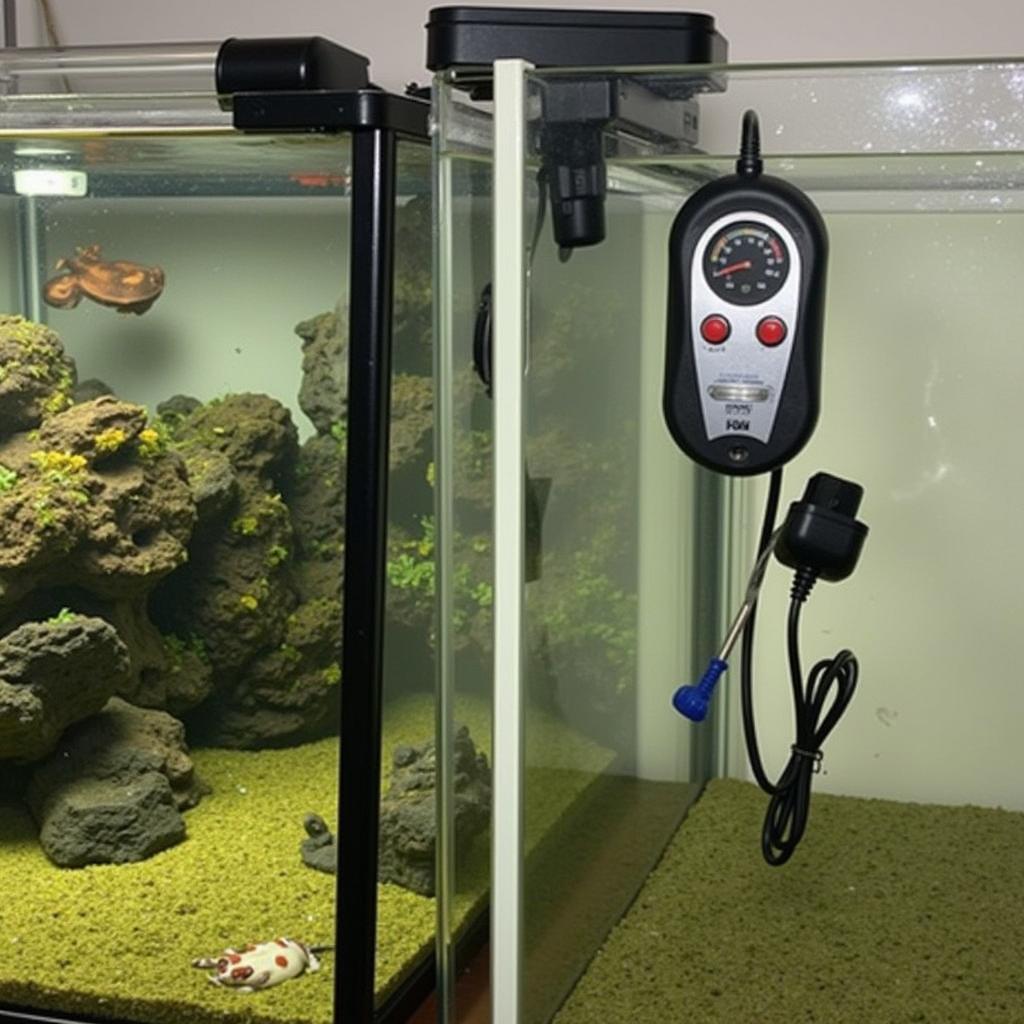The Ultimate Guide to Your African Dwarf Frog Kit
An African Dwarf Frog Kit offers a convenient way to introduce these fascinating aquatic creatures into your home. This guide covers everything from setting up the perfect environment to ensuring your frogs thrive. Let’s dive in!
Choosing the Right African Dwarf Frog Kit
Selecting the right African dwarf frog kit is crucial for your frogs’ well-being. Consider the tank size – a 10-gallon tank is ideal for a small group. Look for kits that include essential equipment like a filter, heater, and thermometer. The kit should also have appropriate decorations like rocks, plants, and hiding places. Don’t forget to check if the kit includes a water conditioner to dechlorinate tap water. A good quality African dwarf frog kit will set you up for success from the start. What’s important is finding a kit that meets both your needs and the needs of your future aquatic companions.
What about lighting? While African dwarf frogs don’t require special lighting, a low-wattage light can enhance the tank’s aesthetic appeal and make it easier to observe your frogs. african dwarf frog care sheet offers more insights into caring for these delightful amphibians.
Setting Up Your African Dwarf Frog Tank
Once you have your African dwarf frog kit, it’s time to set up the tank. Start by rinsing the tank and decorations thoroughly with plain water. Never use soap or detergents, as they can be harmful to the frogs. Next, add the gravel or substrate to the tank, creating a sloping layer for a more natural environment. Fill the tank with dechlorinated water, ensuring the temperature is between 72 and 78 degrees Fahrenheit.
Essential Equipment for Your Kit
A filter is vital for maintaining water quality, removing waste, and keeping the water oxygenated. A heater is crucial for maintaining a consistent temperature, especially during colder months. A thermometer is essential to monitor the water temperature accurately. Don’t forget about regular water changes to keep your tank clean and healthy.  Essential Equipment for an African Dwarf Frog Tank: Filter, heater, and thermometer are crucial for maintaining a healthy environment.
Essential Equipment for an African Dwarf Frog Tank: Filter, heater, and thermometer are crucial for maintaining a healthy environment.
What is the best way to add water to the tank? Pour the water slowly onto a plate placed on the substrate to avoid disturbing the gravel and decorations. This also helps to prevent clouding the water.
Feeding Your African Dwarf Frogs
African dwarf frogs are carnivores and require a diet rich in protein. Bloodworms, brine shrimp, and daphnia are excellent food choices. You can also offer them small pieces of sinking pellets or tablets specifically formulated for aquatic frogs. Feed them once every two to three days, ensuring they consume the food within a few minutes to avoid overfeeding and water contamination. Overfeeding can lead to health issues for your frogs.
african dwarf frog and cory catfish can be a good combination, but it’s important to ensure they both get enough food.
Creating a Balanced Diet
While a staple diet of bloodworms and brine shrimp is sufficient, offering a variety of foods ensures your frogs receive a balanced nutritional intake. Consider adding other protein-rich foods like tubifex worms or mosquito larvae to their diet. How much should you feed your frogs? Start with a small amount and observe how much they consume within a few minutes. Adjust the amount accordingly for future feedings.
“Variety is key to a healthy diet for African dwarf frogs,” says Dr. Evelyn Kamau, a renowned aquatic veterinarian. “Offering a mix of live and frozen foods ensures they receive all the necessary nutrients.”
Maintaining Water Quality and Health
Maintaining excellent water quality is paramount for your frogs’ health. Regular partial water changes are crucial. Aim for a 25% water change every two weeks. This helps remove accumulated waste and replenish essential minerals in the water. Use a gravel vacuum during water changes to remove debris from the substrate. african clawed frog tank setup offers similar principles in terms of water maintenance.
“Regular water changes are the cornerstone of good aquarium hygiene,” says Dr. David Otieno, an expert in aquatic animal care. “It’s the most effective way to prevent disease and promote a healthy environment.”
Common Health Issues and Solutions
While African dwarf frogs are generally hardy, they can be susceptible to certain health problems. “Red leg” is a common bacterial infection characterized by redness on the frogs’ legs and belly. If you notice any signs of illness, consult a veterinarian specializing in aquatic animals. african dwarf frog predators discusses potential threats to these frogs, highlighting the importance of a safe and appropriate tank environment. Prevention is always better than cure, so maintain optimal water quality and provide a stress-free environment for your frogs.
Conclusion
An African dwarf frog kit provides a fantastic opportunity to enjoy these charming aquatic creatures. By following these guidelines, you can ensure your frogs thrive in a healthy and stimulating environment. Remember, a little effort goes a long way in providing the best care for your African dwarf frog kit.
FAQ
- How long do African dwarf frogs live? Typically, they live for five to seven years.
- Can African dwarf frogs live with other fish? Yes, they can cohabit with peaceful, small fish that won’t nip their fins.
- Do African dwarf frogs need air? While primarily aquatic, they need to surface to breathe air.
- How can I tell if my African dwarf frog is healthy? A healthy frog has smooth skin, bright eyes, and is active.
- How often should I clean the tank? Partial water changes every two weeks and a full cleaning every few months are recommended.
- Can I use tap water for my frog tank? No, you should always use dechlorinated water.
- What is the ideal tank size for African dwarf frogs? A 10-gallon tank is suitable for a small group.
Do you have more questions regarding aquarium setup and maintenance? Check out african cichlid 55 gallon tank setup for information on larger tank setups.
For further assistance, please contact us: Phone: +255768904061, Email: kaka.mag@gmail.com, or visit our address: Mbarali DC Mawindi, Kangaga, Tanzania. We have a 24/7 customer service team ready to assist you.



